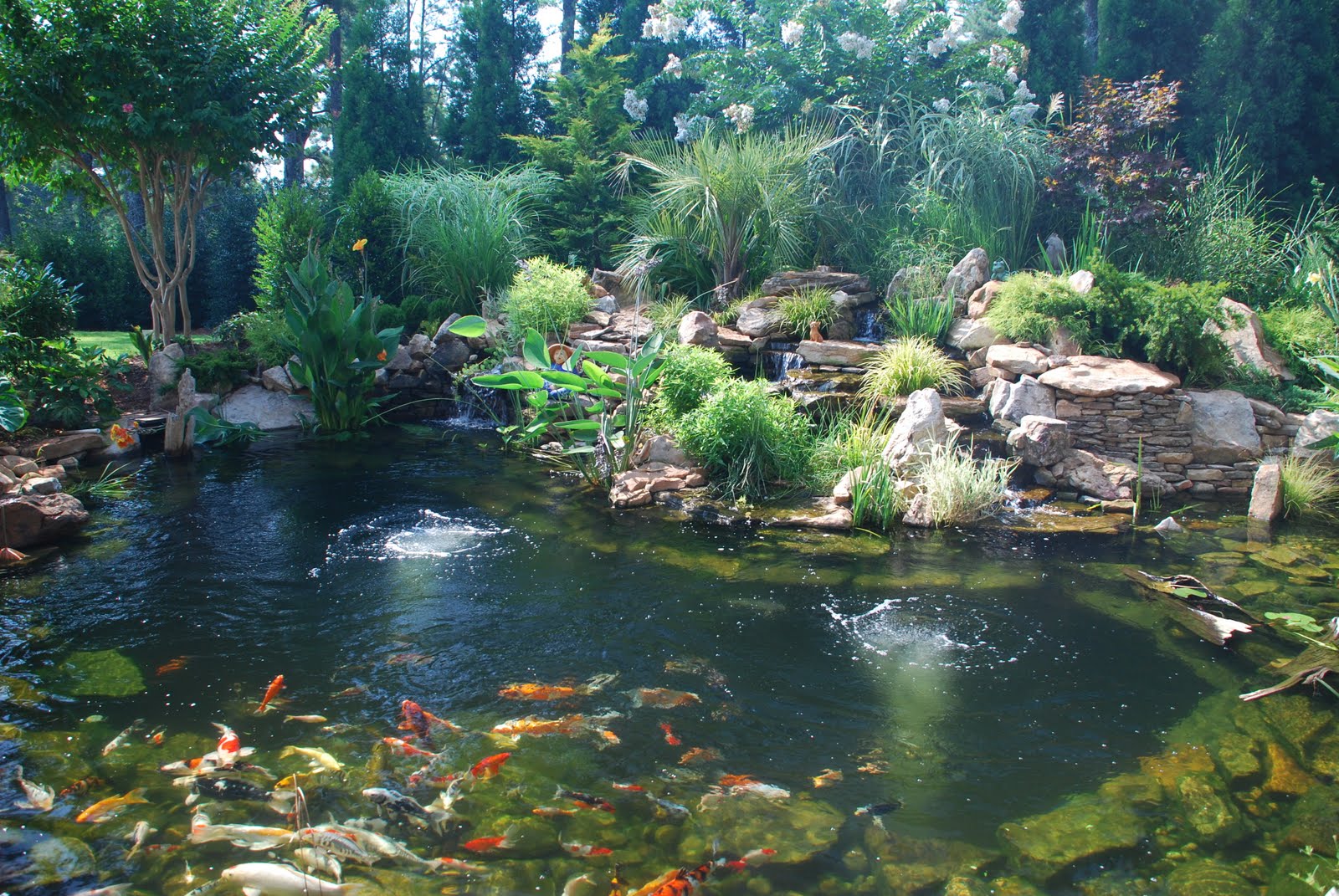
The Ultimate Guide to Planting Plants in Koi Ponds for a Beautiful and Healthy Ecosystem
Planting Plants in Koi Ponds: A Beginner’s Guide
Koi ponds are a delightful addition to any garden space. The presence of dazzling koi fish, flowing water, and lush aquatic plants creates a serene and calming environment. However, many people are intimidated by the idea of adding plants to their koi pond. The good news is that planting plants in koi ponds can be easy, fun, and beneficial for the pond ecosystem.
Benefits of Adding Plants to Koi Ponds
Planting aquatic plants in your koi pond has several benefits that go beyond mere aesthetics. Here are a few reasons why you should consider incorporating plants to your water feature:
- Improve water quality: Aquatic plants absorb excess nutrients from fish waste and other organic matter, which improves water quality and clarity. They also release oxygen and reduce carbon dioxide levels.
- Create natural filtration: Plants act as natural filters by trapping debris and pollutants in their root systems. This helps to reduce the amount of maintenance needed to keep the pond clean.
- Provide shade and shelter: Koi fish require shade, especially during hot summer months. Plants provide natural shade and shelter, which also reduces the stress on fish.
- Enhance visual appeal: Aquatic plants add color, texture, and beauty to your koi pond. They also create a more natural environment for your fish.
- Promote biodiversity: By adding different types of plants, you can create a diverse ecosystem that supports a variety of aquatic creatures.
Choosing the Right Plants for Koi Ponds
When it comes to choosing plants for your koi pond, there are a few things to consider. Firstly, you should choose plants that are suitable for the growing conditions of your pond. Factors such as water temperature, depth, and light availability can greatly affect plant growth. Secondly, you’ll want to choose plants that are safe for your fish. Some plants can be toxic or harmful to koi, so it’s important to do your research. Here are a few types of plants that are great for koi ponds:
Submerged Plants
Submerged plants are those that grow completely underwater. They are often used for their ability to absorb excess nutrients and improve water quality. Submerged plants also provide hiding places for baby fish. Examples of submerged plants include:
- Anacharis
- Hornwort
- Waterweed
- Eelgrass
- Coontail
- Tapegrass
Floating Plants
Floating plants are those that float on the surface of the water. They provide shade and shelter for fish, while also adding beauty to the pond. Examples of floating plants include:
- Water Hyacinth
- Water Lettuce
- Duckweed
- Floating Heart
- Lotus
Marginal Plants
Marginal plants are those that grow in shallow water along the edges of the pond. They can provide a natural transition between the water and the surrounding land, while also providing cover for fish. Examples of marginal plants include:
- Cattails
- Bogbean
- Pickerel
- Water Iris
- Marsh Marigold
- Sweet Flag
How to Plant Aquatic Plants in Koi Ponds
Planting aquatic plants in your koi pond is similar to planting regular plants in a garden bed. Here’s a step-by-step guide to get you started:
Step 1: Prepare your Plants
Before you plant your aquatic plants, you’ll need to prepare them for their new home. Remove any dead or damaged leaves, and trim long roots. This will encourage new growth and prevent decay in the water.
Step 2: Add Soil to Planting Containers
Aquatic plants require soil to grow properly. Fill planting containers with aquatic soil, leaving enough space for the plant’s roots. You can use plastic pots or fabric planting bags, which are more breathable and allow for better root growth.
Step 3: Add Fertilizer to Soil
Aquatic plants require nutrients to grow and thrive. Add a fertilizer tablet to the soil in each planting container, following the manufacturer’s instructions. This will help your plants grow strong and healthy.
Step 4: Plant Your Aquatic Plants
Gently place your aquatic plants into their containers, making sure the roots are properly covered with soil. Add more soil if needed, and press down firmly to secure the plant in place. Place the containers in the desired location in your koi pond.
Step 5: Maintain Your Aquatic Plants
Proper maintenance is key to keeping your aquatic plants healthy and thriving. Here are a few tips:
- Trim dead or damaged leaves regularly
- Remove any debris that falls into the water
- Fertilize according to the plant’s needs
- If planting in containers, periodically repot the plants into larger containers
- Balance the number of plants in your pond with the number of fish for optimal ecosystem health
Conclusion
Planting aquatic plants in your koi pond is a great way to improve its aesthetics, as well as the health of its ecosystem. By choosing the right plants and following proper planting and maintenance techniques, you can create a beautiful and thriving water feature that you can enjoy for years to come.







